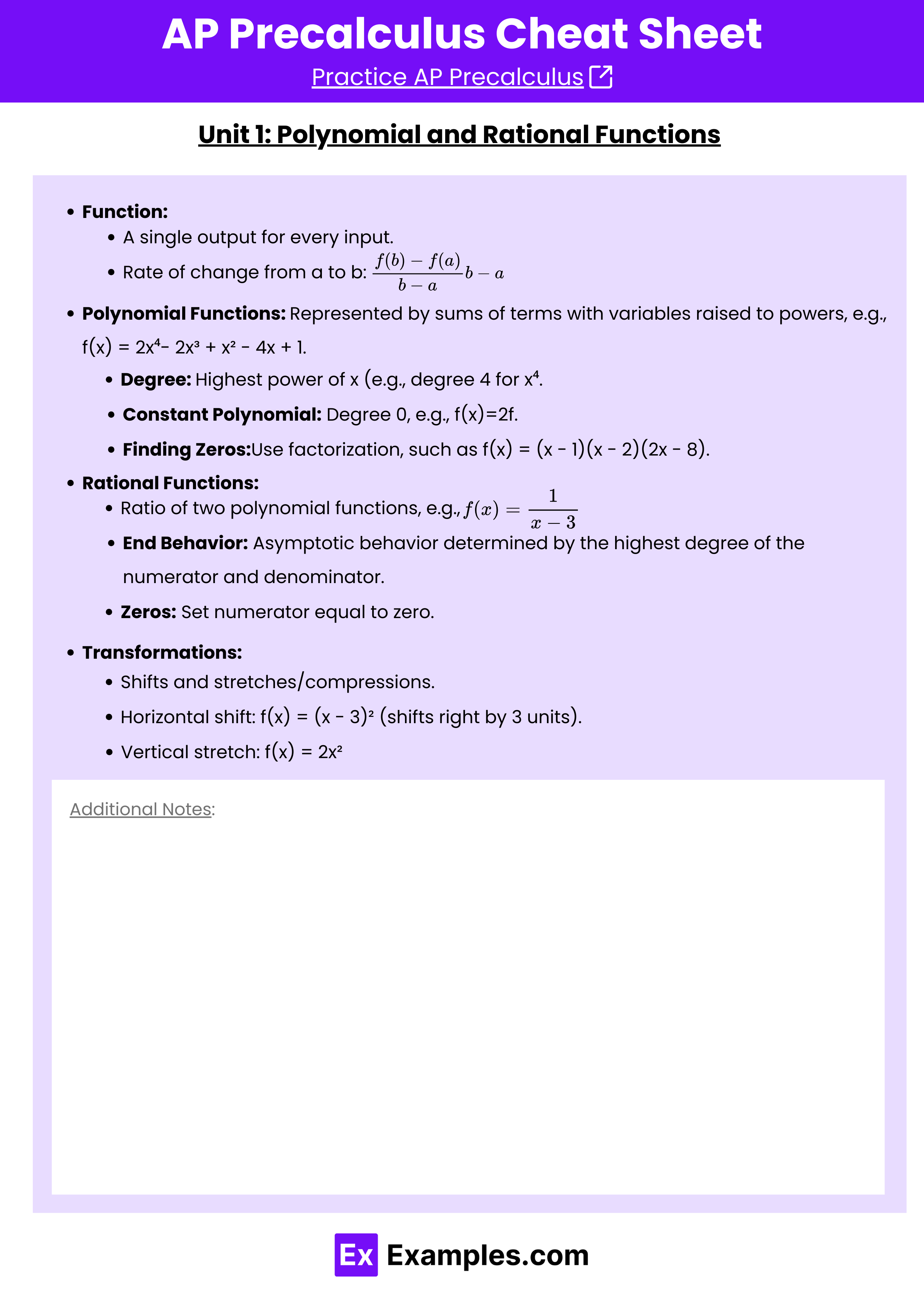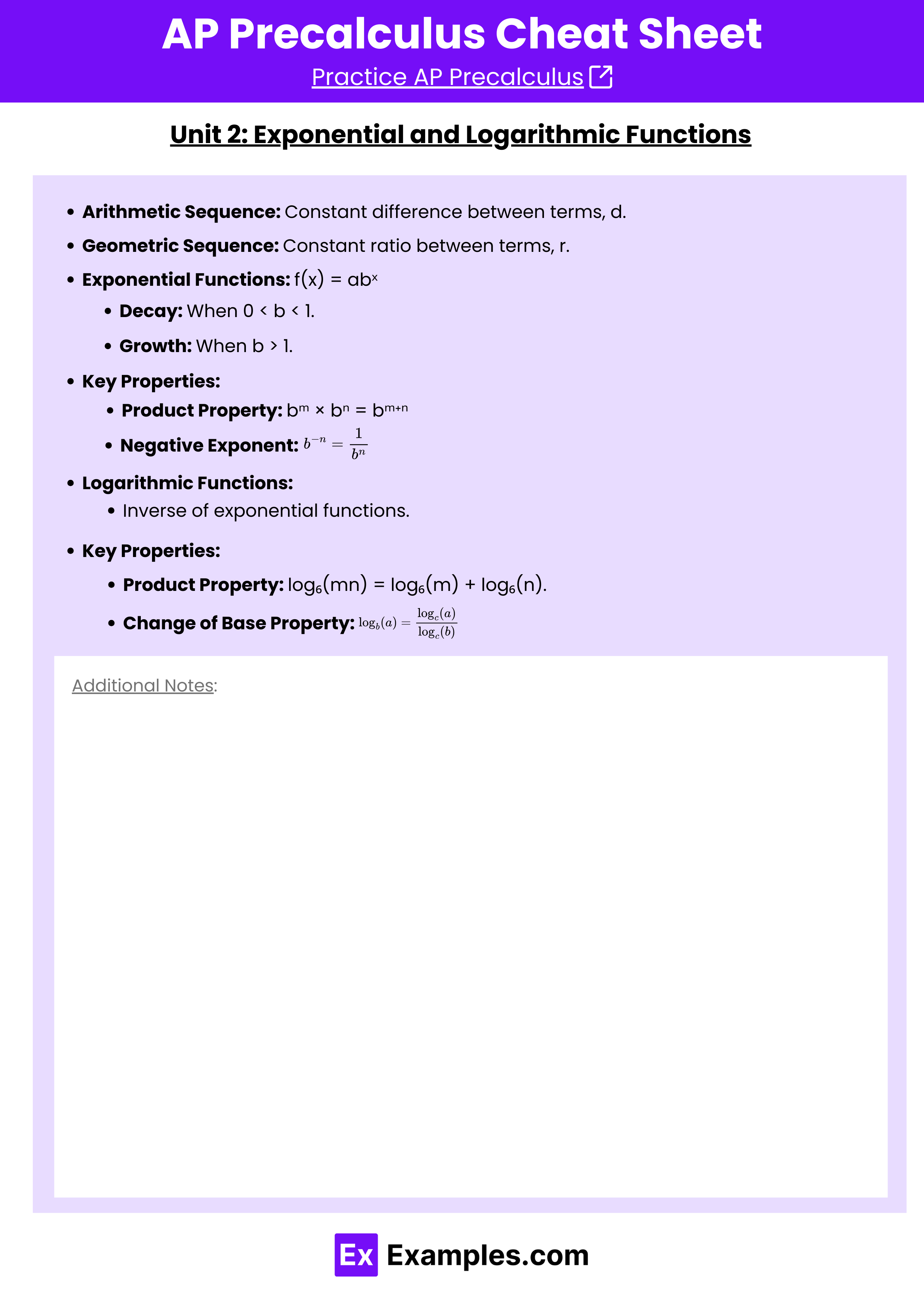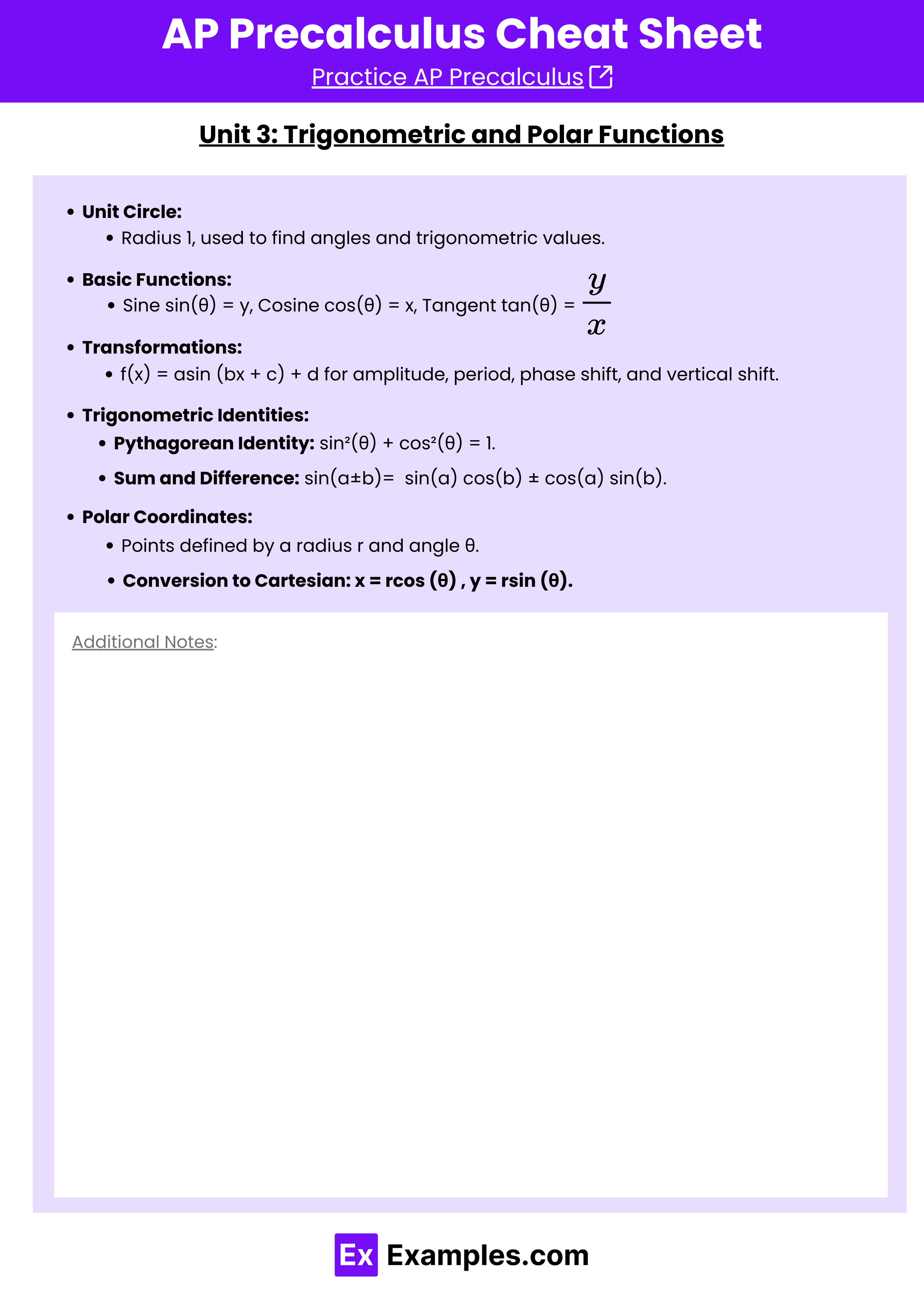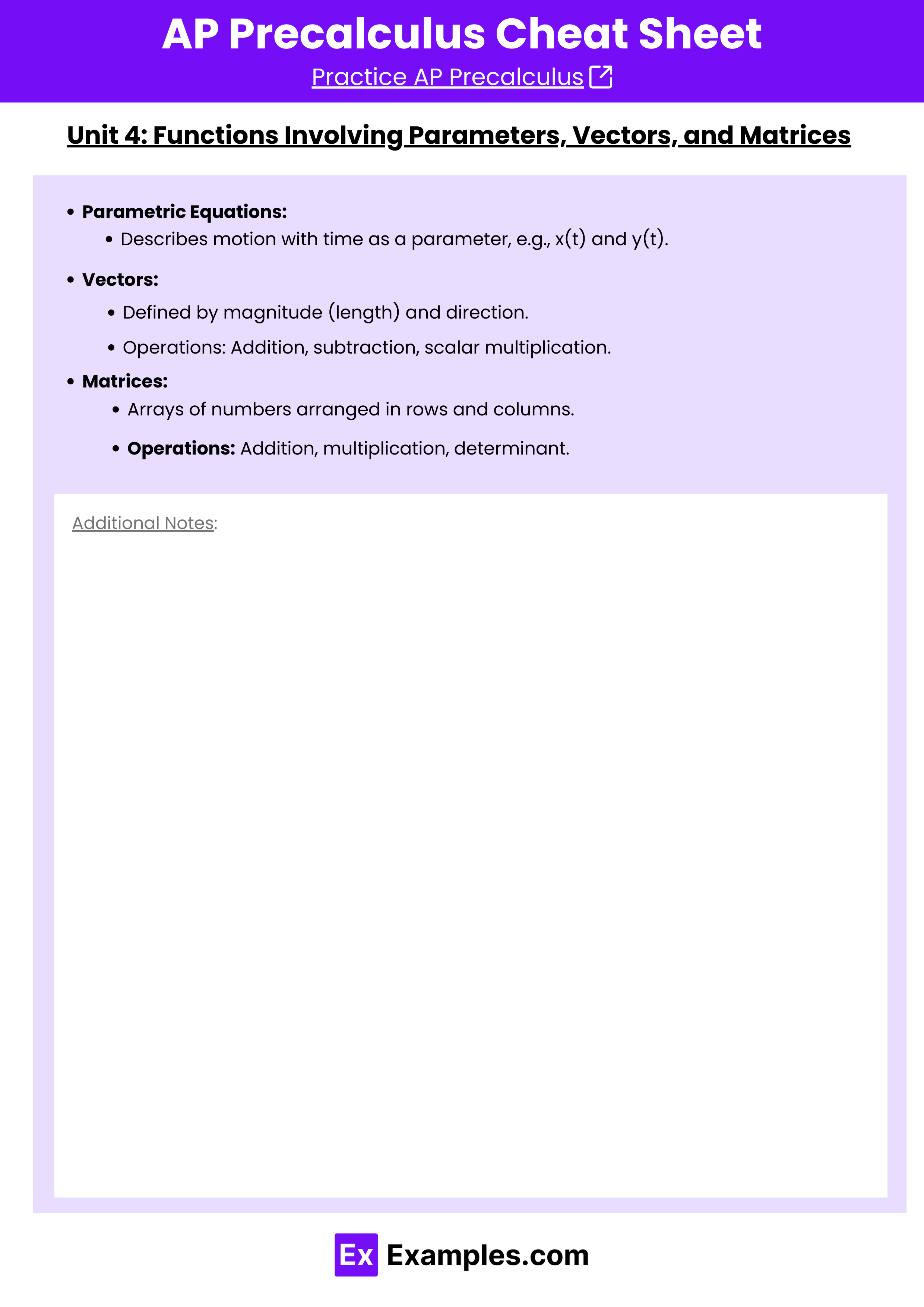Master the essential principles of AP Precalculus with this comprehensive cheat sheet from examples.com. Whether you’re tackling polynomial functions or trigonometric identities, this guide simplifies complex topics with clear examples and key formulas to boost your understanding.
Free AP Precalculus Principles Practice Test




Download AP Precalculus Principles Cheat Sheet – pdf
Unit 1 – Polynomials and Rational Functions
- Function:
- A single output for every input.
- Rate of change from a to b:
 .
.
- Polynomial Functions:
- Represented by sums of terms with variables raised to powers, e.g.,
 .
. - Degree: Highest power of x (e.g., degree 4 for
 ).
). - Constant Polynomial: Degree 0, e.g., f(x)=2f.
- Represented by sums of terms with variables raised to powers, e.g.,
- Finding Zeros:
- Use factorization, such as f(x) = (x – 1)(x – 2)(2x – 8).
- Rational Functions:
- Ratio of two polynomial functions, e.g.,
 .
. - End Behavior: Asymptotic behavior determined by the highest degree of the numerator and denominator.
- Zeros: Set numerator equal to zero.
- Ratio of two polynomial functions, e.g.,
- Transformations:
- Shifts and stretches/compressions.
- Horizontal shift:
 (shifts right by 3 units).
(shifts right by 3 units). - Vertical stretch:
 .
.
Unit 2 – Exponential and Logarithmic Functions
- Arithmetic Sequence: Constant difference between terms, d.
- Geometric Sequence: Constant ratio between terms, r.
- Exponential Functions:
 .
.
- Growth: When b > 1.
- Decay: When 0 < b < 1.
- Key Properties:
- Product Property:
 .
. - Negative Exponent:
 .
.
- Product Property:
- Logarithmic Functions:
- Inverse of exponential functions.
- Key Properties:
- Product Property:
 .
. - Change of Base Property:
 .
.
- Product Property:
Unit 3 – Trigonometric and Polar Functions
- Unit Circle:
- Radius 1, used to find angles and trigonometric values.
- Basic Functions:
- Sine
 , Cosine
, Cosine  , Tangent
, Tangent  .
.
- Sine
- Transformations:
 for amplitude, period, phase shift, and vertical shift.
for amplitude, period, phase shift, and vertical shift.
- Trigonometric Identities:
- Pythagorean Identity:
 .
. - Sum and Difference:
 .
.
- Pythagorean Identity:
- Polar Coordinates:
- Points defined by a radius r and angle
 .
. - Conversion to Cartesian:
 ,
,  .
.
- Points defined by a radius r and angle
Unit 4 – Functions Involving Parameters, Vectors, & Matrices
- Parametric Equations:
- Describes motion with time as a parameter, e.g., x(t) and y(t).
- Vectors:
- Defined by magnitude (length) and direction.
- Operations: Addition, subtraction, scalar multiplication.
- Matrices:
- Arrays of numbers arranged in rows and columns.
- Operations: Addition, multiplication, determinant.
FRQ Tips:
- Clear Work: Show all steps and justify your reasoning.
- Check Units: Ensure correct units in final answers.
- Use Graphs: When appropriate, sketch graphs to support your work.
Formulas:
- Quadratic Formula:
 .
. - Area of a Triangle:
 .
. - Distance Formula:
 .
.

